Inside Haiti's Iron Market
- Published
- comments
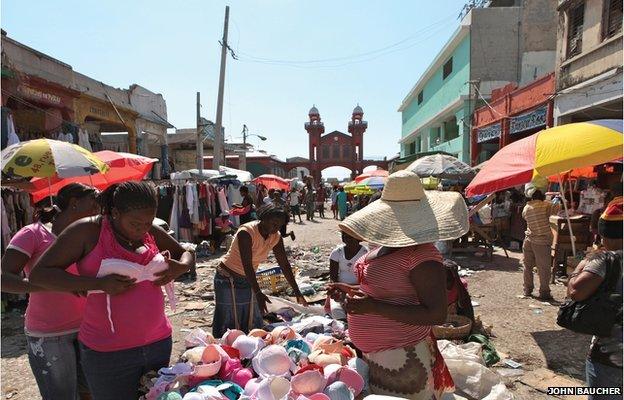
Traders sell their goods in the open air while in the distance the clock tower of the rebuilt indoor market can be seen.
It is three years since a magnitude 7.0 earthquake hit the city of Port-au-Prince in Haiti, resulting in more than 200,000 deaths and one million being left homeless.
The disaster pushed the aid agencies to the limit. Much help was promised from around the globe, yet the scale of devastation and other complications led to delays.
Even now, three years on, with the return of cholera to the island for the first time in a century and with as many as 400,000 people still living in tent cities, there is evidence that the reconstruction of many lives is still a distant dream.
Yet there have been some successes. Photographer John Baucher has published a book entitled Nou La, We Are Here which documents the lives of those who work at the Iron Market (Marche de Fer) in Port-au-Prince.
Built in France, the main structure was originally destined to be a railway station in Cairo, but the deal fell through and so the President of Haiti Florvil Hyppolite had it shipped over in 1891, and there it stood until it was destroyed by the earthquake of 2010.
The market consisted of two halls joined by a clock tower and an ambitious rebuilding project saw it reopen a year on from the quake, with ex-US President Bill Clinton on hand to do the honours.
The new market was rebuilt using as much of the original material as possible, with the addition of a new perimeter wall which saw local tradesmen employed to create ornamental details. It also houses a large array of solar panels to provide the power. "The Iron Market is a first-class building for a third world country," says Baucher. "And whilst the building is important it is the people who use the building who make it."
Baucher's pictures capture some of the 900 traders in the halls, at work, engaging with their customers and sometimes just proudly sitting in front of their stalls. It's a lovely body of work and one that shows that photography can focus on the positive as well as the gloomier side of life.
Here's a selection from the book.
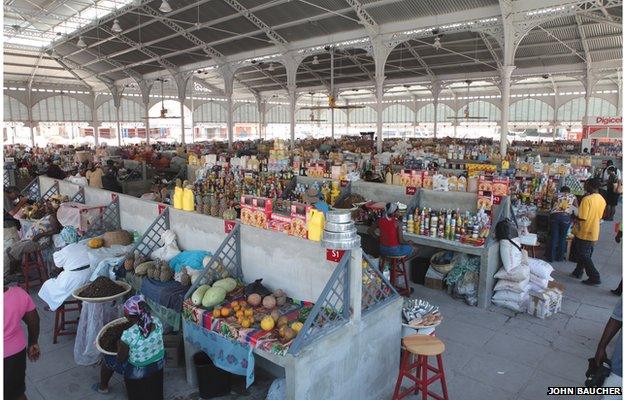
For many, the reopening couldn't come soon enough, as trader Jeannette Borgelin notes: "The Iron Market is a national treasure and I've been selling here since 1971 as my parents were vendors here too. During the rebuild, I was at home, impatiently waiting for the reopening."

Inside the southern hall of the market you will find fresh fruit, vegetables, tinned and dry goods as well as beauty products.
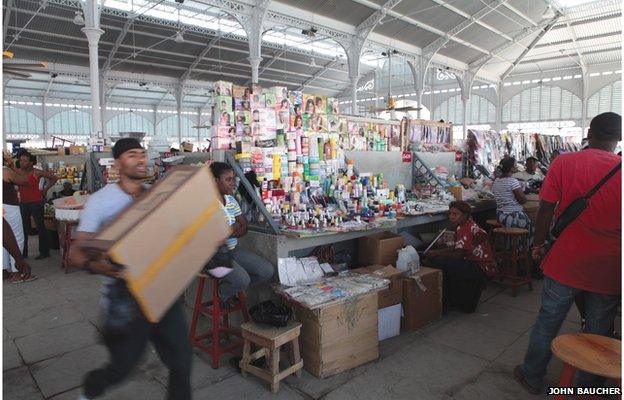
Baucher set up a small temporary stall when he began the project so he could hand out small prints of his work to the traders.
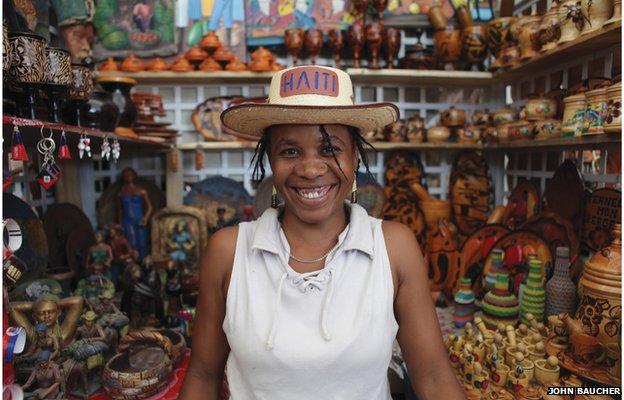
Those whose stalls reside in the halls have the advantage of 24-hour security, offering a secure place to work.
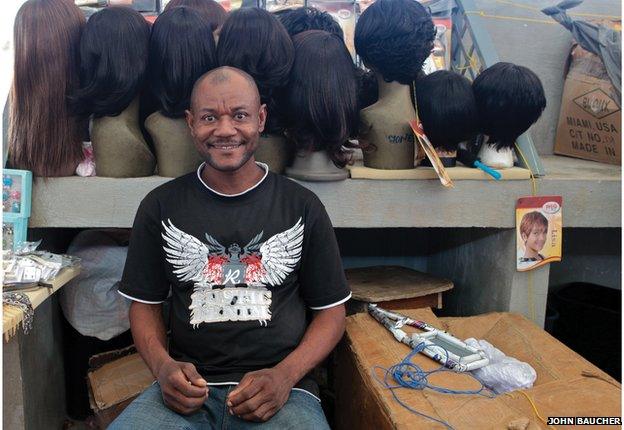
Baucher says hairdressing and selling of beauty products are some of the busiest businesses in the market. Lormestin Desrosiers, seen here, said: "The market is beautiful. I wish they would rebuild other stores in the area to attract more clients downtown."

In the north hall you will find the voodoo stalls.

Outside the Iron Market others trade on the streets.
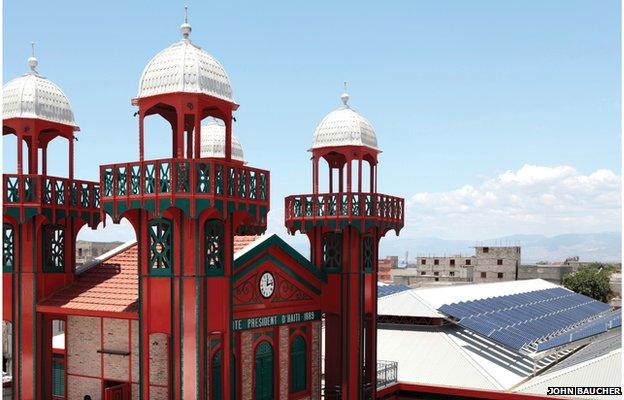
The solar panels on the roof can be seen to the right of this frame.
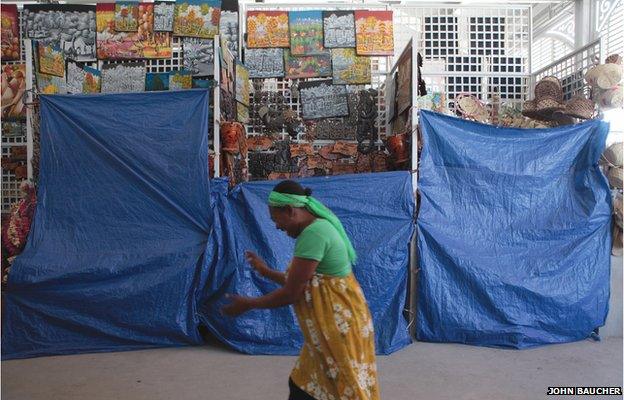
At the end of the day vendors cover their goods and come back the next day to trade once more.
I have previously written about John Baucher's, external street portraits: Belfast and Beyond: Through the Viewfinder